
The remains of the Puemape temple, where recent excavations led by the Chicama Archaeological Program have uncovered evidence that may reshape understanding of early ritual architecture and ancestor worship, are seen in La Libertad, Peru, in this handout photo released on August 7, 2025. Chicama Archaeological Program/Handout via REUTERS
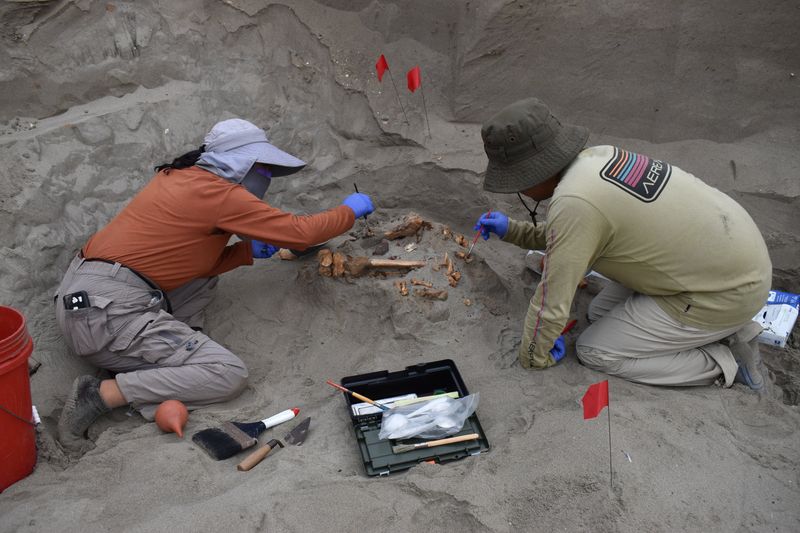
Archaeologists uncover a skeleton found at the Puemape temple, where recent excavations led by the Chicama Archaeological Program have uncovered evidence that may reshape understanding of early ritual architecture and ancestor worship, in La Libertad, Peru, in this handout photo released on August 7, 2025. Chicama Archaeological Program/Handout via REUTERS

A drone view shows the Puemape temple, where recent excavations led by the Chicama Archaeological Program have uncovered evidence that may reshape understanding of early ritual architecture and ancestor worship, in La Libertad, Peru, in this handout photo released on August 7, 2025. Chicama Archaeological Program/Handout via REUTERS

Archaeologists uncover a skull found at the Puemape temple, where recent excavations led by the Chicama Archaeological Program have uncovered evidence that may reshape understanding of early ritual architecture and ancestor worship, in La Libertad, Peru, in this handout photo released on August 7, 2025. Chicama Archaeological Program/Handout via REUTERS
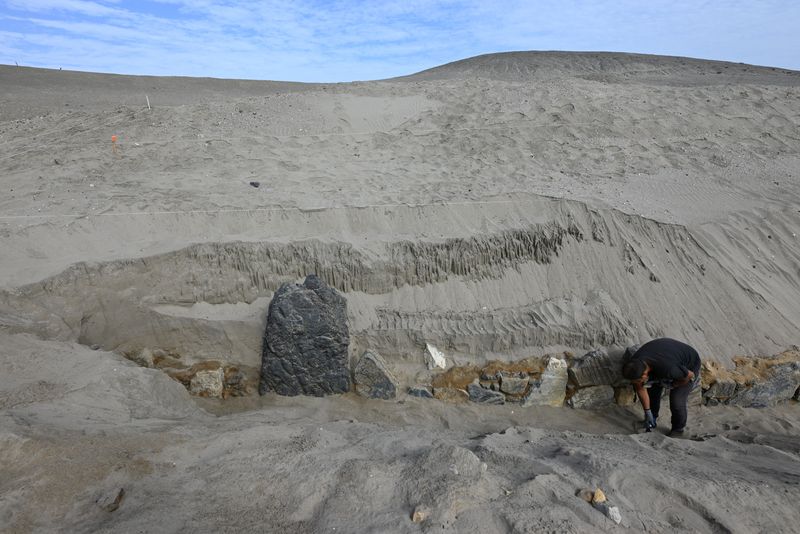
An archaeologist works at the Puemape temple, where recent excavations led by the Chicama Archaeological Program have uncovered evidence that may reshape understanding of early ritual architecture and ancestor worship, in La Libertad, Peru, in this handout photo released on August 7, 2025. Chicama Archaeological Program/Handout via REUTERS
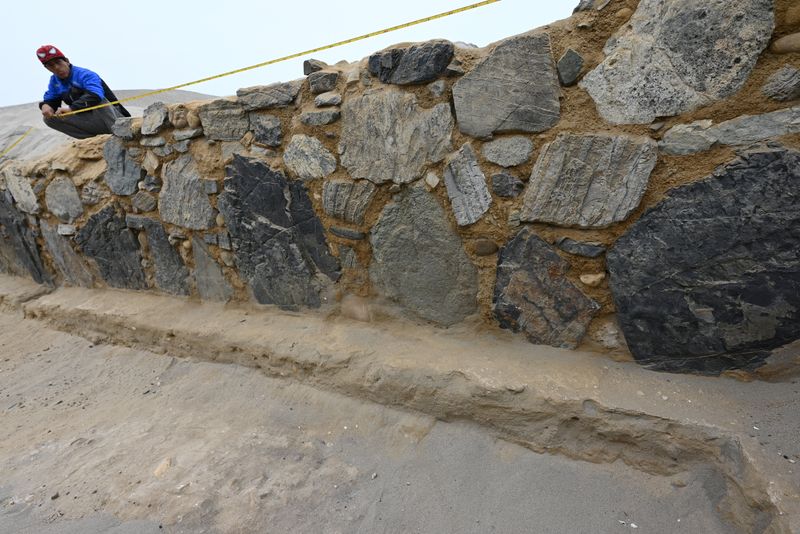
A man measures the remains of a wall at the Puemape temple, where recent excavations led by the Chicama Archaeological Program have uncovered evidence that may reshape understanding of early ritual architecture and ancestor worship, in La Libertad, Peru, in this handout photo released on August 7, 2025. Chicama Archaeological Program/Handout via REUTERS
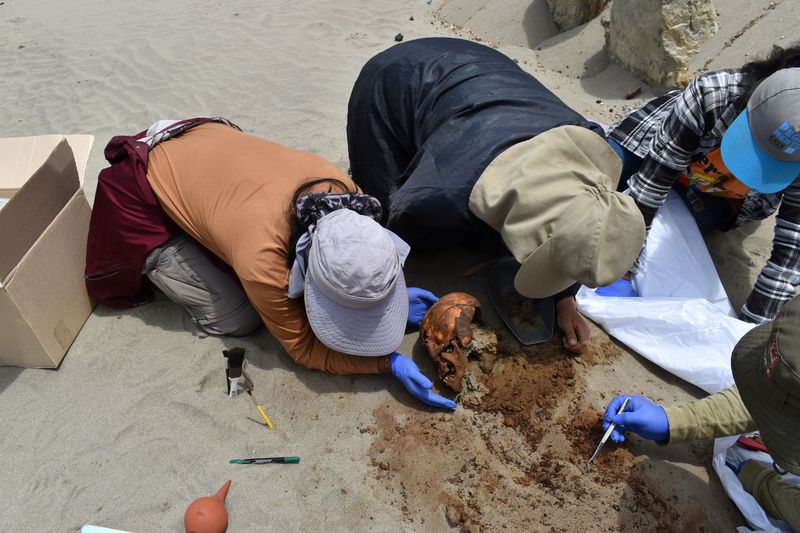
Archaeologists uncover a skull found at the Puemape temple, where recent excavations led by the Chicama Archaeological Program have uncovered evidence that may reshape understanding of early ritual architecture and ancestor worship, in La Libertad, Peru, in this handout photo released on August 7, 2025. Chicama Archaeological Program/Handout via REUTERS
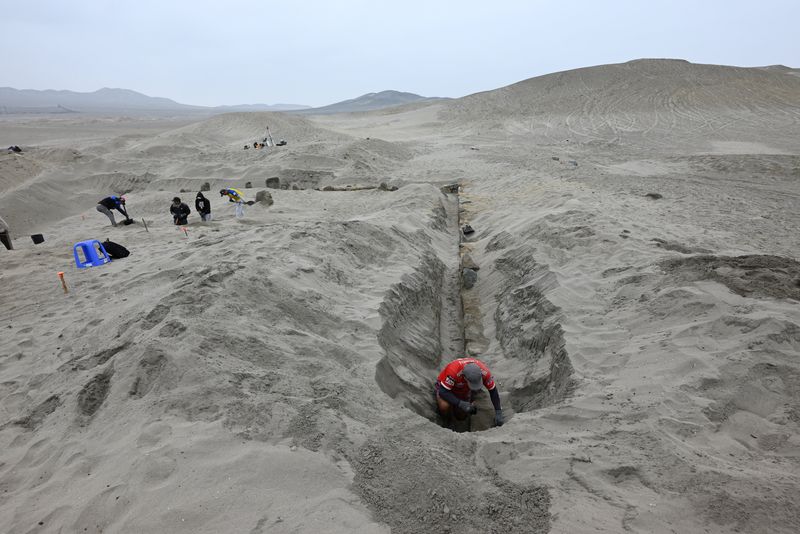
Archaeologists work at the Puemape temple, where recent excavations led by the Chicama Archaeological Program have uncovered evidence that may reshape understanding of early ritual architecture and ancestor worship, in La Libertad, Peru, in this handout photo released on August 7, 2025. Chicama Archaeological Program/Handout via REUTERS
LIMA (Reuters) -In a stark discovery on Peru's northern coast, archaeologists have unearthed the 3,000-year-old remains of 14 people believed to be victims of a ritual human sacrifice, offering a glimpse into the country's ancient past.
A research team found the skeletal remains near what is thought to be a ritual temple of the Cupisnique culture, a civilization that thrived more than a millennium before the Incas. Some of the dead were buried face down with their hands tied behind their backs.
"The way in which these individuals were buried is atypical, as are the traumas and injuries they suffered during life and the violence they endured," said Henri Tantalean, the archeologist who led the excavation.
The position of the bodies, he explained, "is a typical form of human sacrifice."
Unlike many elaborate burials found elsewhere in Peru, these victims were placed in simple pits in sand mounds, without any accompanying offerings or treasures.
The discovery was made near a beach in the La Libertad region, about 675 kilometers (420 miles) north of Lima, adding to the list of the country's important archeological sites like Machu Picchu and the Nazca lines.
(Reporting by Carlos Valdez for Reuters TV; Writing by Marco Aquino; Editing by Alistair Bell)









 Reuters US Top
Reuters US Top
 CNN
CNN AlterNet
AlterNet NBC News
NBC News New York Post Opinion
New York Post Opinion Raw Story
Raw Story America News
America News Detroit Free Press
Detroit Free Press